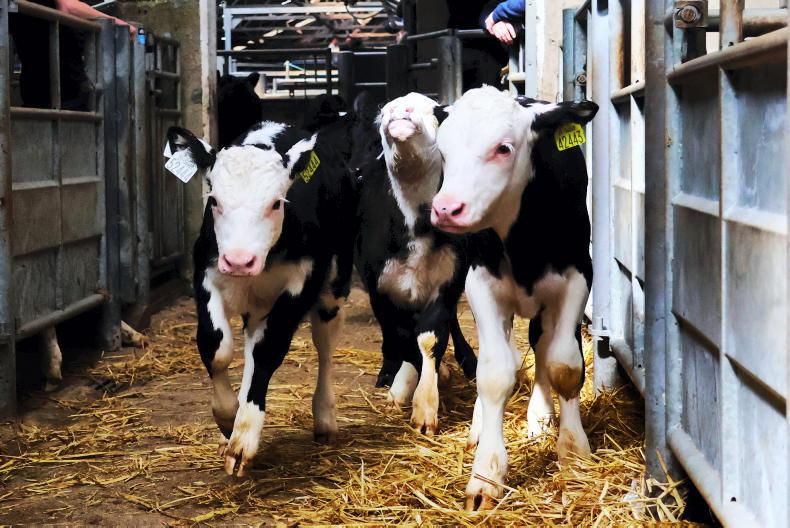Over the last four to five years, there has been an increase in cases of CCN in both calves and lambs over the summer months.
This condition is called cerebro cortical necrosis and it is a condition that affects the brain, mostly in young animals.
This condition has always been around and will affect animals very sporadically.
Over the last few years, herds and flocks can have increased numbers of animals affected at this time of year.
The condition is caused by lack of vitamin B1 (thiamine), which plays a vital role in brain function and using glucose in the brain.
The symptoms we see are related to polioencephalomalacia. This is brain damage, which, when severe, animals recover poorly from.
Symptoms
Like many conditions, an early diagnosis and spotting symptoms early is critical.
The symptoms will, of course, look like many other meningitis cases.
Some differences will be the star gazing and lack of temperature.
The calves or lambs can often present and appear blind at first.
They will also be staggering in the early hours and then can present collapsed and unable to get up.
Their eyes can roll in their head and often be flickering.
They tend to have stiffness in their necks and heads can roll backwards and upwards.
Occasionally, you will have older animals presenting, but it really is calves and lambs in their first grazing season we see most commonly.
Why does it occur?
Vitamin B1 is interesting because it is made only in the rumen by the rumen bugs and microbes.
In young animals, they get vitamin B1 through milk. So anything that stops intakes in young animals or anything that affects the microbes in the rumen in older animals can cause vitamin B1 deficiency.
Young growing ruminants like first-season calves and lambs between two and seven months are most at risk.
It seems to occur mostly when they have a diet change at grass or during grazing.
In older animals, it is usually associated with a sudden drop in pH, again from sudden diet changes.
The cases I have seen for the last couple of weeks have been calves and lambs going on to fresh lush grass 10 to 14 days previously.
This seems to upset the rumen bugs and then you get animals going down with the symptoms we described earlier.
Also, sudden changes off meal and on to grass-only diets can do it in some farms.
Treatments
The animals can experience brain damage, which with every passing hour can result in poorer treatment outcomes.
So it is key to spot the symptoms early for CCN and begin treatment.
Your vet may use IV vitamin B1, followed by every six to eight hours by intramuscular vitamin B1 injections for three days.
I often advised a steroid injection to young animals and fluids if necessary at the start of treatment also.
Animals can be uncoordinated and are better off confined indoors in a pen with deep straw.
Where I see more than 2% of cases affected, we have injected the group and also looked at the diet.
Prevention
It is very important to remember the healthy rumen bugs can make vitamin B1 and that prevention of this in lambs and calves is all about not having any massive changes in diet.
The recent drought has slowed down growth and with rain expected you could have a flush of grass again.
Young ruminants on meal should be weaned off to an all-grass diet slowly; never make big feeding changes suddenly and always over 10 to 14 days to allow the rumen to adapt.
Calves and lambs on very lush grass benefit from having a fibre source to nibble at while their rumens are developing in my opinion.
This can, of course, be judged by weight gain and dung consistency.
Avoid sudden dietary changes and expect a very odd case, but anything greater than 2% means herd and flock approach or investigation is required.









SHARING OPTIONS